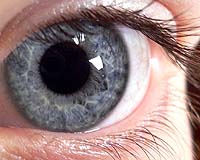 |
Evanston IL (SPX) Jan 20, 2011 Researchers at Northwestern University have placed nanocrystals of rock salt into lead telluride, creating a material that can harness electricity from heat-generating items such as vehicle exhaust systems, industrial processes and equipment and sun light more efficiently than scientists have seen in the past. The material exhibits a high thermoelectric figure of merit that is expected to enable 14 percent of heat waste to electricity, a scientific first. Chemists, physicists and material scientists at Northwestern collaborated to develop the material. The results of the study are published by the journal Nature Chemistry. "It has been known for 100 years that semiconductors have this property that can harness electricity," said Mercouri Kanatzidis, the Charles E. and Emma H. Morrison Professor of Chemistry in The Weinberg College of Arts and Sciences. "To make this an efficient process, all you need is the right material, and we have found a recipe or system to make this material." Kanatzidis, co-author of the study, and his team dispersed nanocrystals of rock salt (SrTe) into the material lead telluride (PbTe). Past attempts at this kind of nanoscale inclusion in bulk material have improved the energy conversion efficiency of lead telluride, but the nano inclusions also increased the scattering of electrons, which reduced overall conductivity. In this study, the Northwestern team offers the first example of using nanostructures in lead telluride to reduce electron scattering and increase the energy conversion efficiency of the material. "We can put this material inside of an inexpensive device with a few electrical wires and attach it to something like a light bulb," said Vinayak Dravid, professor of materials science and engineering at Northwestern's McCormick School of Engineering and Applied Science and co-author of the paper. "The device can make the light bulb more efficient by taking the heat it generates and converting part of the heat, 10 to 15 percent, into a more useful energy like electricity." The automotive, chemical, brick, glass and any industry that uses heat to make products could make their system more efficient with the use of this scientific breakthrough, said Kanatzidis, who also has a joint appointment at the Argonne National Laboratory. "The energy crisis and the environment are two major reasons to be excited about this discovery, but this could just be the beginning," Dravid said. "These types of structures may have other implications in the scientific community that we haven't thought of yet, in areas such as mechanical behavior and improving strength or toughness. Hopefully others will pick up this system and use it."
Share This Article With Planet Earth
Related Links Northwestern University Powering The World in the 21st Century at Energy-Daily.com
 Better Than The Human Eye
Better Than The Human EyeChicago IL (SPX) Jan 20, 2011 Researchers from Northwestern University and the University of Illinois at Urbana-Champaign are the first to develop a curvilinear camera, much like the human eye, with the significant feature of a zoom capability, unlike the human eye. The "eyeball camera" has a 3.5x optical zoom, takes sharp images, is inexpensive to make and is only the size of a nickel. (A higher zoom is possible with ... read more |
|
| The content herein, unless otherwise known to be public domain, are Copyright 1995-2010 - SpaceDaily. AFP and UPI Wire Stories are copyright Agence France-Presse and United Press International. ESA Portal Reports are copyright European Space Agency. All NASA sourced material is public domain. Additional copyrights may apply in whole or part to other bona fide parties. Advertising does not imply endorsement,agreement or approval of any opinions, statements or information provided by SpaceDaily on any Web page published or hosted by SpaceDaily. Privacy Statement |